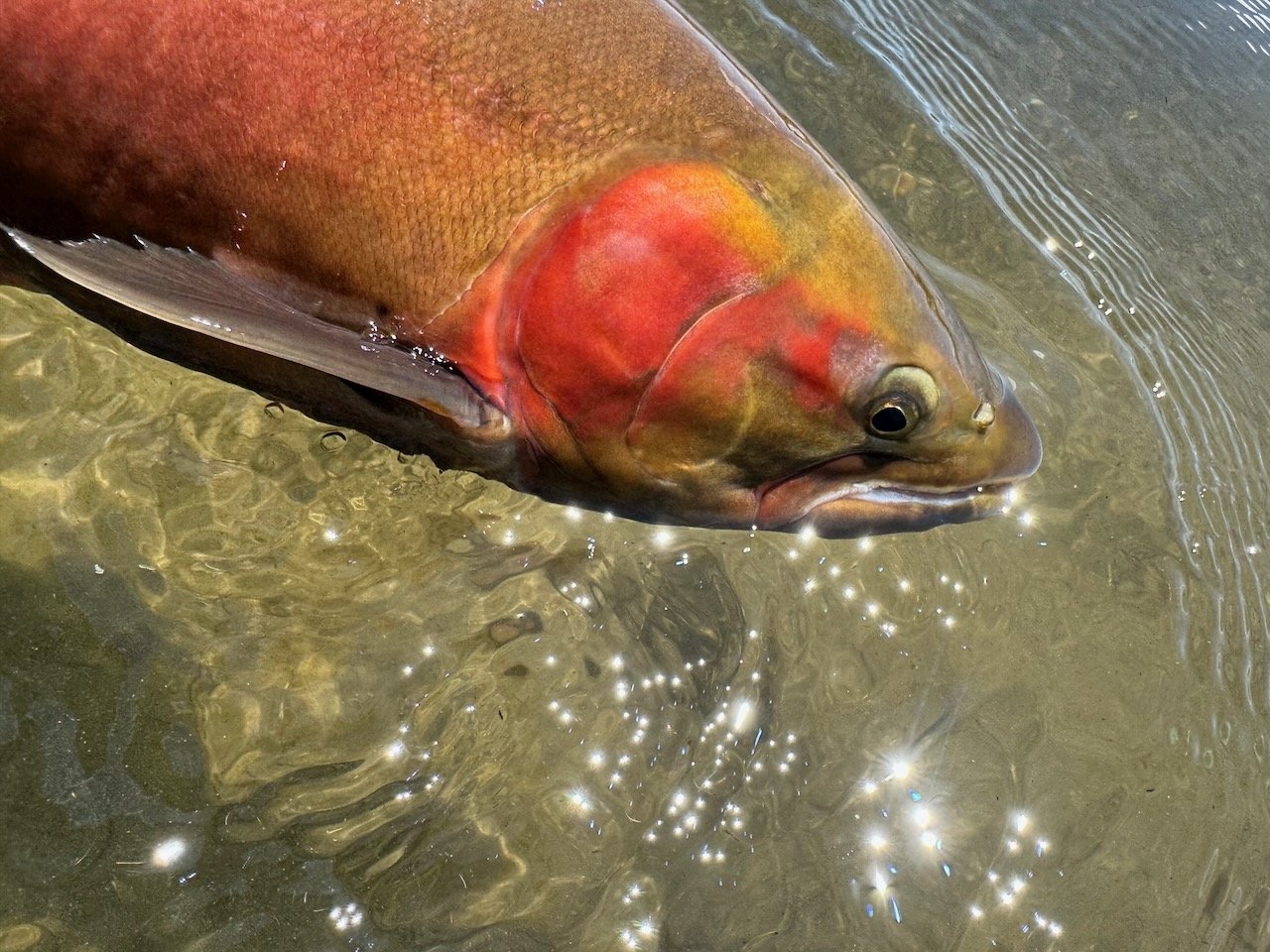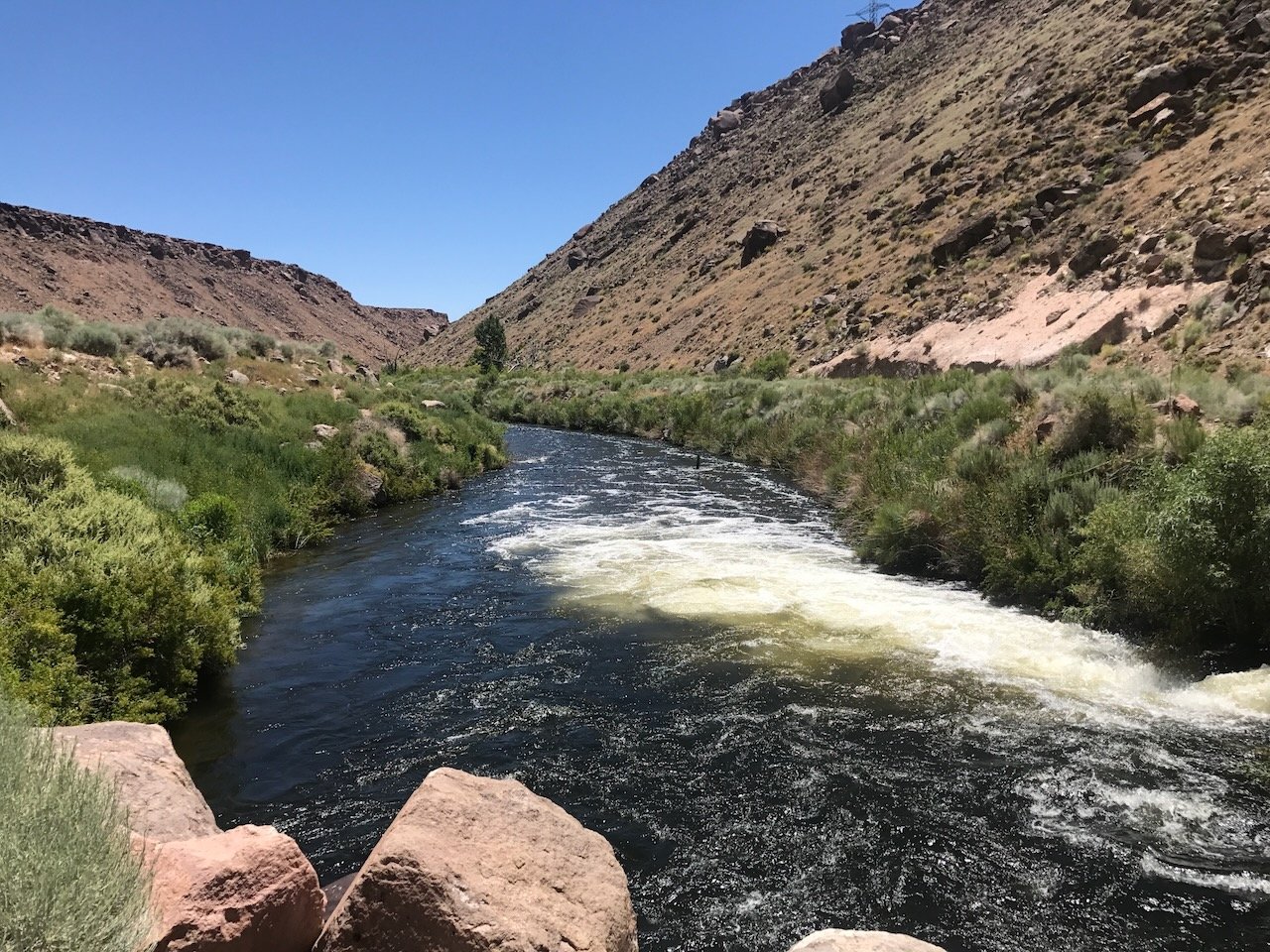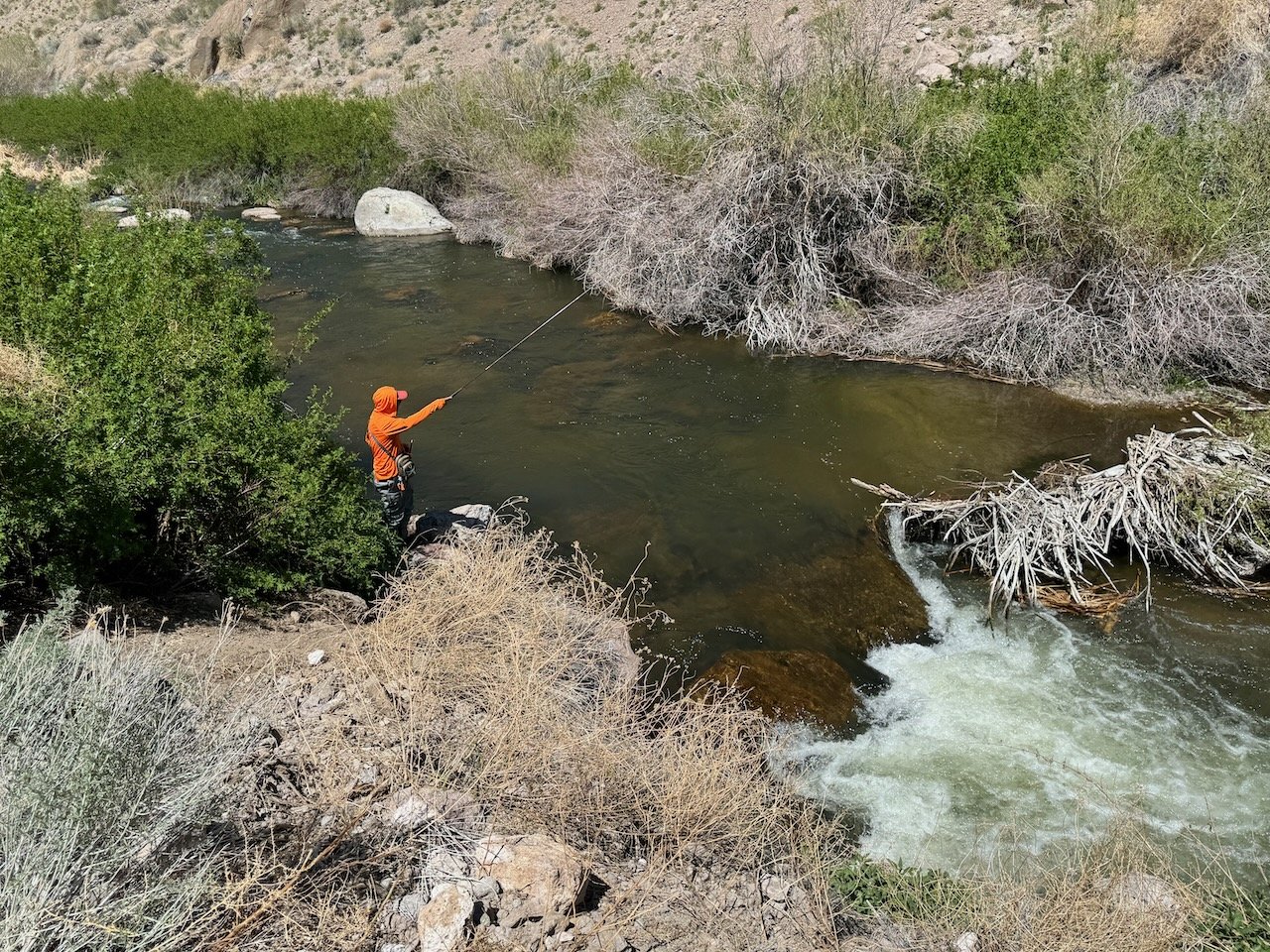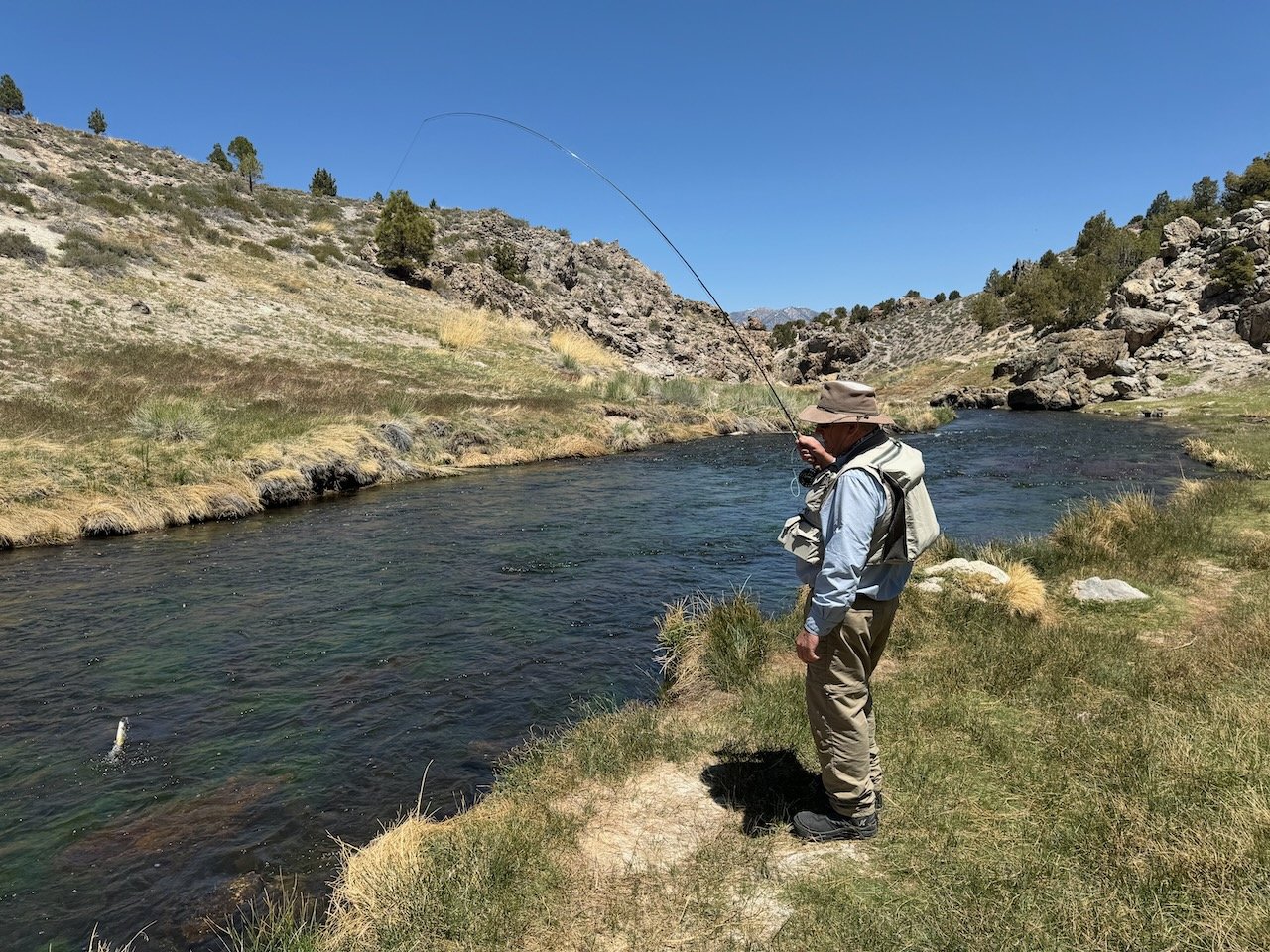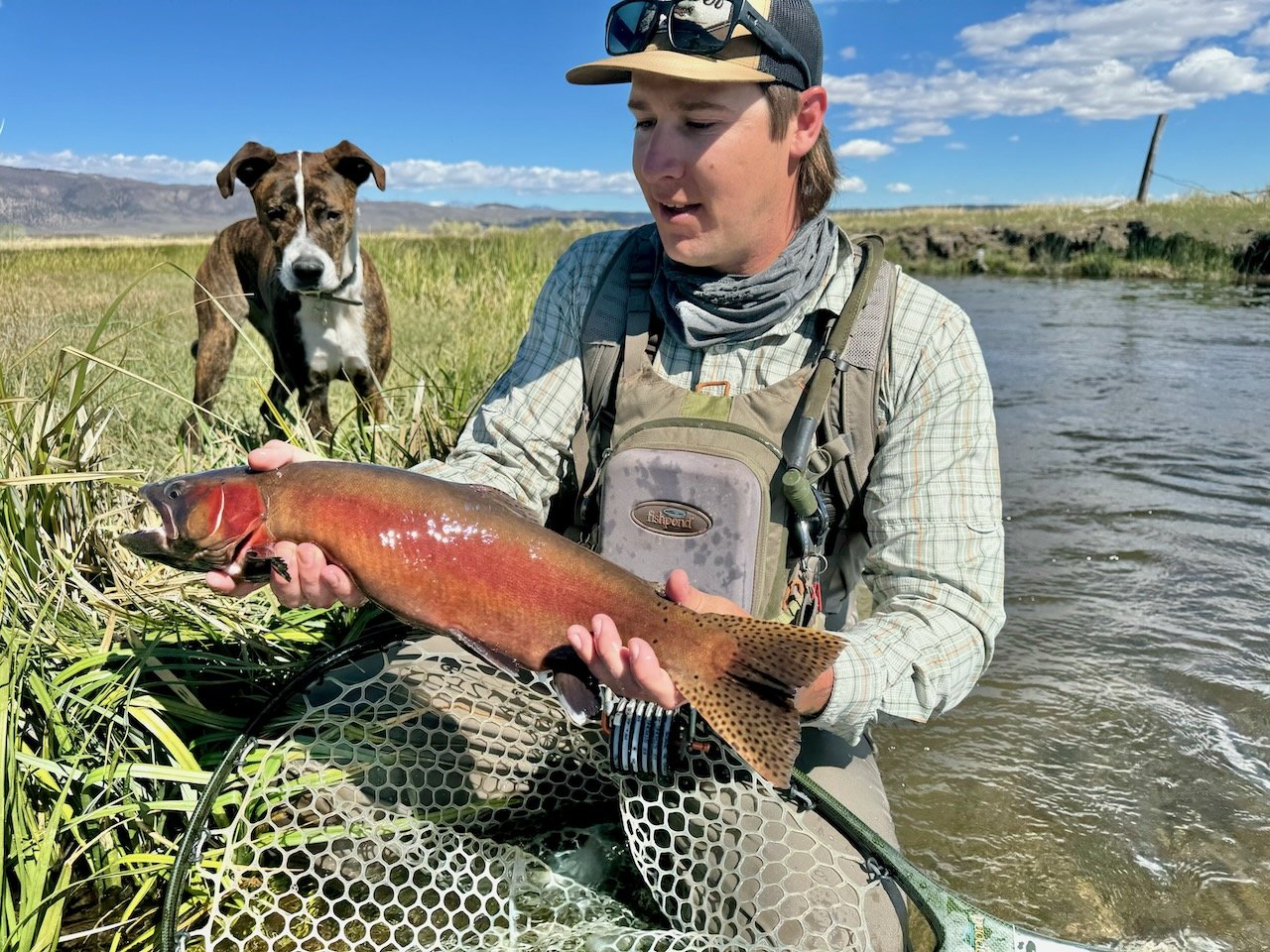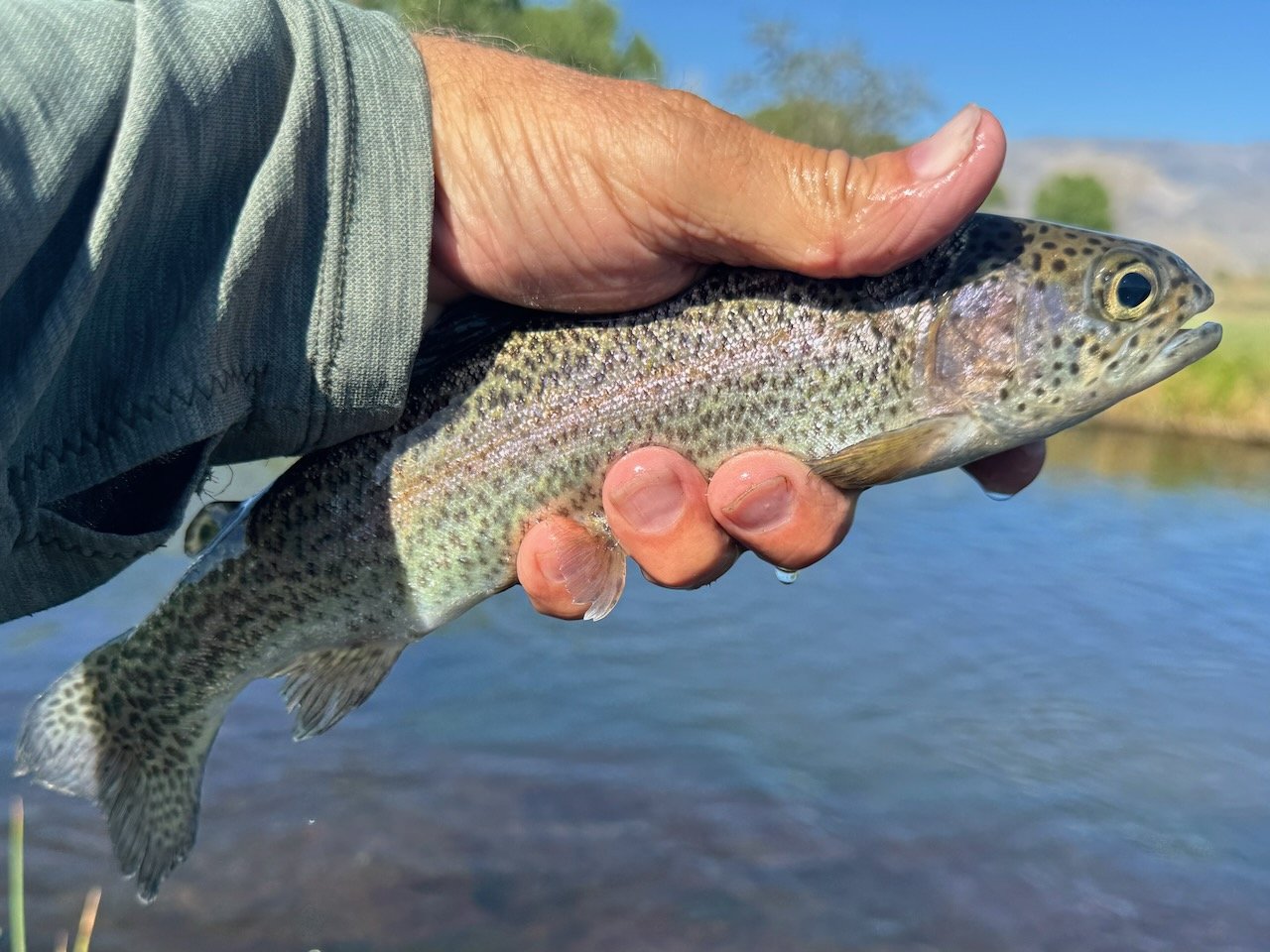Spring time in the Eastern Sierra is plagued with winds. This last week has seen lots of sunny days with heavy winds which makes it hard to fly fish. Successful fly fishers in the Eastern Sierra know how to cast in the wind. It’s an everyday occurrence here in the Eastern Sierra. Mornings are quite often wind free and the time that fly fishers should be on the water fly fishing. With the warmer weather there is an increase in insect activity which means there is an increase in trout feeding activity. While there is some dry fly activity to be found nymphing is the most productive method of fly fishing in the Eastern Sierra right now. The trout are feeding on mayflies, midges and caddis flies.
It's time to fly fish the upper Owens River as the trophy cutthroat trout have arrived in the river.
Lower Owens River
Wild Trout Section:
With flows at 525 CFS fly fishing on the lower Owens River is on hold until flows decrease to below 300 CFS.
Lower Owens River flows are up to 525 CFS which is too high to safely wade and fly fish the spots that are only accessible by wading.
Owens River Gorge
Middle Gorge Power Plant:
Rattle snakes and stinging nettles makes this a tough place to fly fish from June to September. This is a great dry and dropper water to fly fish. The flushing flows have opened up pools and riffles to fly fishers. For dry flies fish with size 18 blue wing olive parachutes, size 16 Adams parachutes, size 10 mini Chernobyl ants and size 14 stimulators. For dropper flies use size 16 bead head flash back gold ribbed hare’s ears, size 18 bead head flash back pheasant tail nymphs, tiger midges and zebra midges.
Tekara Tunki owner Luong Tam tenkara fly fishing the upper Owens River Gorge Power Plant for wild browns.
Hot Creek
Interpretive Site:
There are not many trout feeding on the surface of the creek. Nymphing is the successful method of fly fishing the creek. Using a dry and a dropper is a good way to nymph fish the creek without spooking the trout with the splashing of an indicator. For the dry fly fish with a size 16 Adams parachute, size 10 Chernobyl ants and size 12 stimulator. For nymphs use size 18 olive quildigons, size 18 bead head flash back pheasant tail nymph, size 16 Frenchie’s, size 18 tiger midge and size 18 zebra midges
A wild brown trout jumping out of Hot Creek in the Canyon after taking a size 18 bead head flash back pheasant tail nymph.
Hot Creek
Canyon Section:
Nymphing with a dry and dropper has been excellent in the canyon section of Hot Creek. The trout are feeding on blue wing olive nymphs that are active on the substrate. Any blue wing olive nymph in size 16 or 18 will work. I like to fish with bead head flash back pheasant tail nymphs, olive quilldigons, Frenchie’s and hot spot pheasant tail nymphs. Other nymphs that produce in Hot Creek in the spring are olive burlap caddis, olive scuds, tiger midges and zebra midges. For the dry fly in the dry and dropper rig on Hot Creek use size 16 Adams parachutes, size 10 Chernobyl ants, size 12 or 14 stimulators and size 14 elk hair caddis. Best time to fish the creek is from 9:30 to 2:00 P.M.
Sam Stamy from San Diego with an upper Owens River cutthroat that took a nymph.
Upper Owens River
Above Benton Crossing Bridge:
The wind has made it hard to fish the upper Owens River and get a drag free drift especially with the Euro rig. The trophy cutthroat trout are in the upper Owens River above Benton Crossing Bridge. These trout are pairing up in preparation for spawning These fish are the future population for the Crowley Lake upper Owens River systems. Proper fly fishing etiquette states that fly fishers should not fish for actively spawning trout. Actively spawning trout can be identified by the female turning sideways to move the gravel to form a redd. Nymphing with size 12 stoner nymphs, copper Johns, green/gold Prince nymphs and gold ribbed hare’s ears variations in the deep holes, deep runs and cut banks is producing the migrating cutthroats. There are lots of juvenile rainbows and browns that are feeding on both dries and nymphs. The flies that these juveniles are feeding on are elk hair caddis, Adams parachutes, bead head flash back pheasant tail nymphs, bead head flash back gold ribbed hare’s ears, tiger midges and zebra midges.
Rainbow trout are stocked in Bishop Creek Canal and offer fly fishers the opportunity to catch trout in the canal.
Bishop Creek Canal
Behind Bishop Veterinary Hospital:
With no vegetation like tulles or willows to block the wind fly fishers are finding the canal hard to fish in the wind. Nymphing continues to be the productive method of fly fishing the canal when the wind is not blowing. Euro nymphing is a great way to fish on the canal. The productive fly patterns have been tan scuds, tiger midges, zebra midges, olive quilldigons and bead head flash back pheasant tail nymphs.

